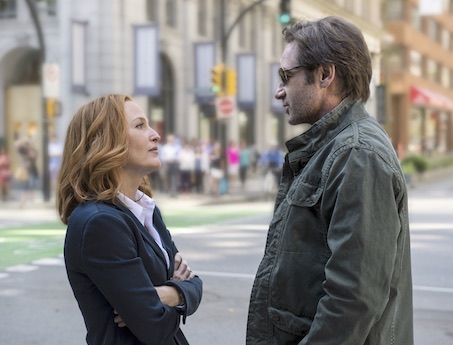Guest Blog: Millennials Do Nostalgia Their Way

A childhood friend of mine recently posted on Facebook, “I just started Netflix binge watching Gilmore Girls, which I had never seen before. I’ve come to one theory: Dean is the worst!” Twenty-four people gave this comment the thumbs up, while a few others commented, “Love that show!!”
They’re not the only ones reliving their pre-pubescence. With a whole slew of millennial niche revivals like Twin Peaks and The X-Files, not to mention an entire programming block, The Splat, devoted to sentimental 90s-viewing, it seems like all we want to do is go back in time.
An effective tool, Don Draper describes nostalgia as “a twinge in your heart more powerful than memory alone.” This sentimental longing is used to sell products and ideas, and like most things in today’s world, there’s even data backing this up. A 2014 study by the Journal of Consumer Research concluded that eliciting a sense of nostalgia increased one’s propensity to spend money.
When brands do it well, there is potential for payoff. Take Surge for example. Heeding the demands of brand loyalists, Coca-Cola re-released the soda, after a 12-year hiatus, in its original design and formula. But this time around, it was launched exclusively on Amazon. Coca-Cola grasped that buying a can of Surge online is analogous to purchasing an Ewing Knicks jersey off Ebay – pure nostalgia delivered with a click of a button. Yes, it’s niche, but Coca-Cola has leveraged the power of nostalgia to literally bring a brand into the 21st century, all while engaging with consumers and exploring a new business strategy.
However, it’s also possible to miss the mark. During the 2015 Super Bowl, RadioShack aired a spot that featured the best (worst?) of the 1980s: big hair, Hulk Hogan and Loverboy. “The 80s called. They want their store back.” The commercial received lots of buzz at the time, but less than a month later the company filed for bankruptcy. The problem: their stores truly felt like they’re from the 80s. A technology retail brand can’t live in the past. In this instance, irony was not an option.
Much of this marketing is directed to Millennials, who not only have $200 billion of annual spending power, but also respond to nostalgia unlike any generation before.
Why is this?
The smarter way to stay on top of broadcasting and cable industry. Sign up below
We revel in collective emotion. A generation that is accustomed to being connected, it’s customary to share our feelings and experiences, expecting to elicit an immediate reaction. A video of police brutality creates shared outrage. A maxim disguised as a meme? LOL. When algorithms are designed to push the most emotionally provoking content to the top of our feeds—creating an avalanche of feedback—we have become conditioned to respond to the responded.
If The Fresh Prince of Bel-Air theme song comes on in a bar, we all sing along, we all get it. Nostalgia is an easy rallying point—everyone can relate, instantly.
We can consume nostalgia in non-physical forms. A generation known for valuing experiences over possessions, post-recession Millennials have less of an interest in collecting tangible objects. We prefer digital hoarding. This phenomenon is encapsulated by Facebook’s “On This Day,” which shows content from this date in the past. That’s how BuzzFeed, Netflix and experiential festivals like 90sFest are able to capitalize on the warm and fuzzy feeling nostalgia provides without having to sell us clutter. Because did it even happen if it’s not on Instagram?
We want to establish our own sense of legacy. The greatest distinguishing factor between two generations is its disdain for the other. The 90s were our time, untainted by 9/11 but evolved beyond All in the Family. Every generation has something to prove, and we proudly hang our hats on Daria and Mario Kart.
Millennial Madeleine Kronovet is a strategist at New York-based Red Peak Branding. Follow her on Twitter @madkron.
